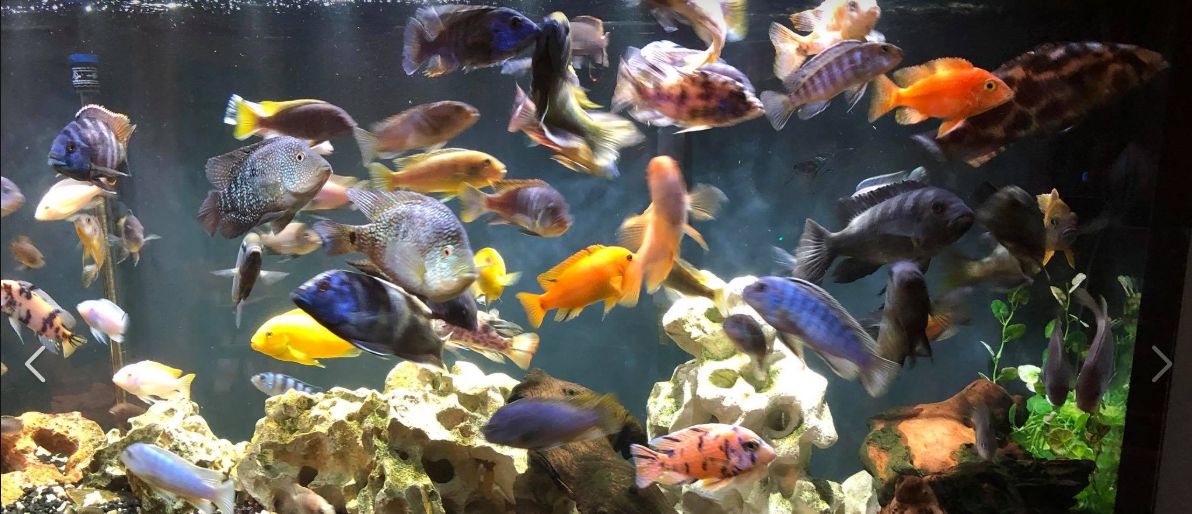
UV sterilizers are small electrical light treatment units which have water flowing over a special electric light bulb. This special bulb puts out an invisible high energy type of light called UV light. UV light is what causes sunburns in humans exposed to the sun for too long. This UV light kills micro-organisms in the water passing over the bulb.
UV light should never be directly viewed by humans. The UV light can result in severe damage to ones eyes even with short duration exposure.
A typical UV unit looks like this:
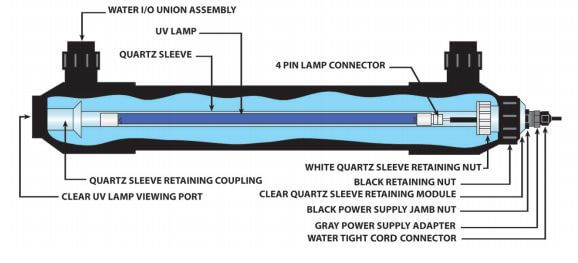
The aquarium water is pumped, typically by a canister pump but sometimes by a separate powerhead, through this unit from one end to the other end. As the water flows by the light bulb the living organisms in the flow of water are killed by the UV light. The UV light is always accompanied by some violet visible light which can be seen sometimes though view holes.
Note that UV ONLY kills organisms that pass over the bulb. It does not kill any beneficial bacteria as beneficial bacteria only grow attached to surfaces, not free swimming. And UV does nothing to brown or green algae growing in the aquarium on decoration, gravel or rocks.
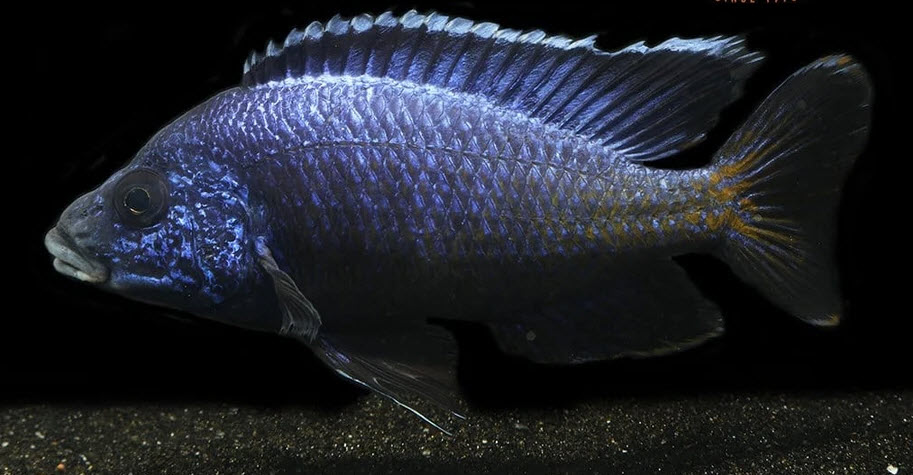
Benefits of UV Sterilizers
UV does the following:
- Kills algae, infusoria and some disease organisms like ich, in the water column (and only in the water column, not on surfaces in the aquarium). If the turn-over is more that four times per hour through the UV it will also control bacteria.
- The aquarium filter will then remove the dead bodies, sometimes in hours, sometimes in days.
- Because some of the organisms in the water column are dead and no longer multiplying, the number of some organisms in the water column decreases.
- Because the immune systems of the fish no longer must fight off some of the organisms in the water column, the fish have more immune system resources available to fight off pathogens.
Note that a hobbyists should not count on UV for reducing the count of some types of bacteria. Some bacteria reproduce very slowly, on the order of splitting in two every two days. These types of bacteria can be controlled with UV. But there are some bacteria that can replicate every ten minutes in polluted waters. Trying to control these bacteria via UV can be difficult if not impossible. So many bacteria cannot be controlled by by reasonable amounts of UV and reasonable flow rates. They have to be controlled by biofiltration.
Also note that UV is NOT a substitute for good biofiltration. The amount of surface area available in the filter is many times more important than a UV unit and will do a much better job of keeping fish healthy.
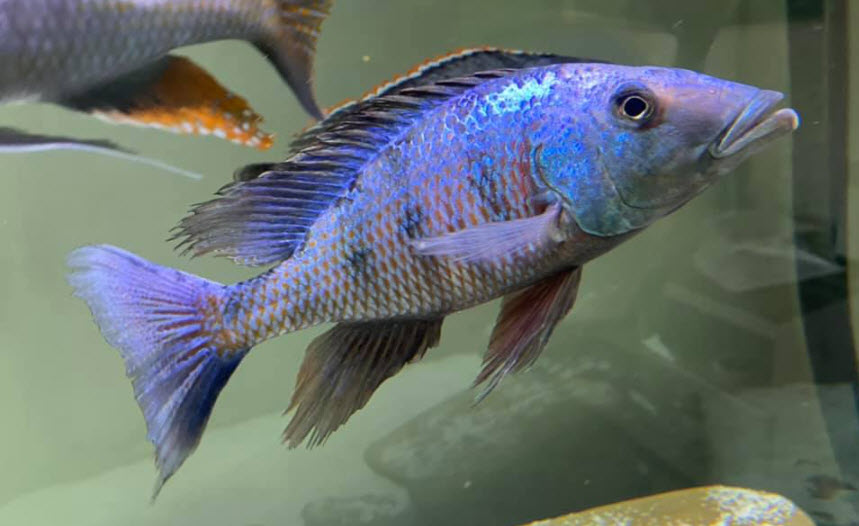
UV can be looked at as a type of filtration and filtration should be looked at from a chart.
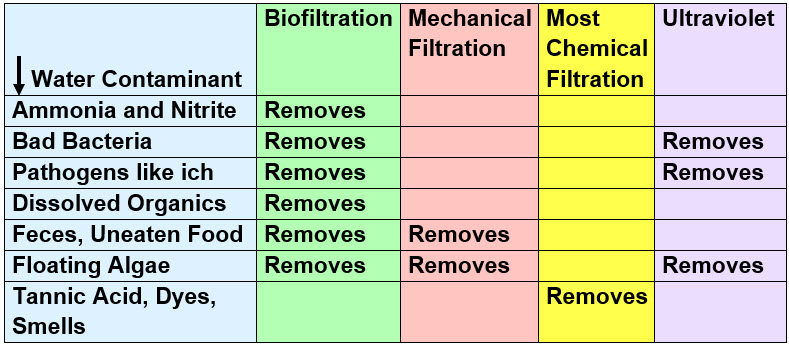
Obviously biofiltration is easily 90% of the game here. But ultraviolet sterilization, while technically not a form of filtration, does a very good job of “filtration”.
Note that UV treatment cannot eliminate dissolved organic compounds (DOCs). Only biofiltration can eliminate DOCs. Since DOCs are what feed bacteria in the water column it is important to eliminate them to produce really crystal clear water that is free of bacteria. So UV needs to be accompanied by very good filtration with good media like foam or pot scrubbers to produce crystal clear, bacteria free water.
.
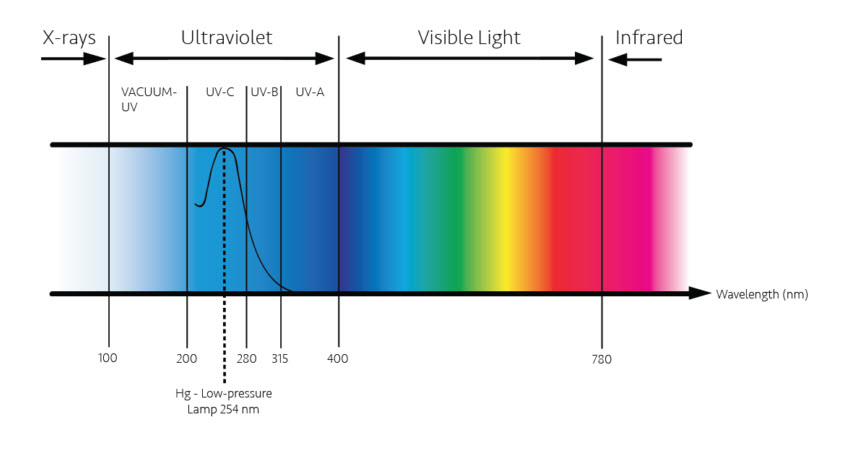
.
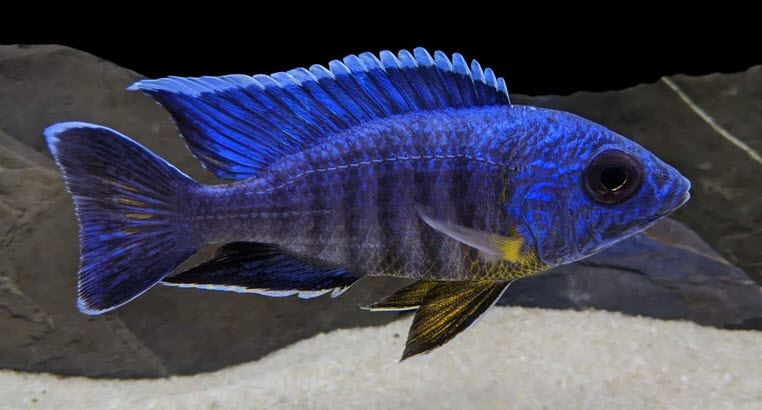
Operation of UV Units
UV units should be left on 24 hours a day, seven days a week. One needs to maximize the amount of UV light and keep the algae and disease organisms at bay ALL the time.
Also the UV lights are a type of fluorescent bulb generally. Fluorescent bulbs often fail when turned on and off frequently. The instructions that come with most units say to leave them on for only 3 to 4 hours a day. The manufacturers of the units know that this will burn out bulbs quickly. So they make more money replacing bulbs. Don’t you just love the profit motive?
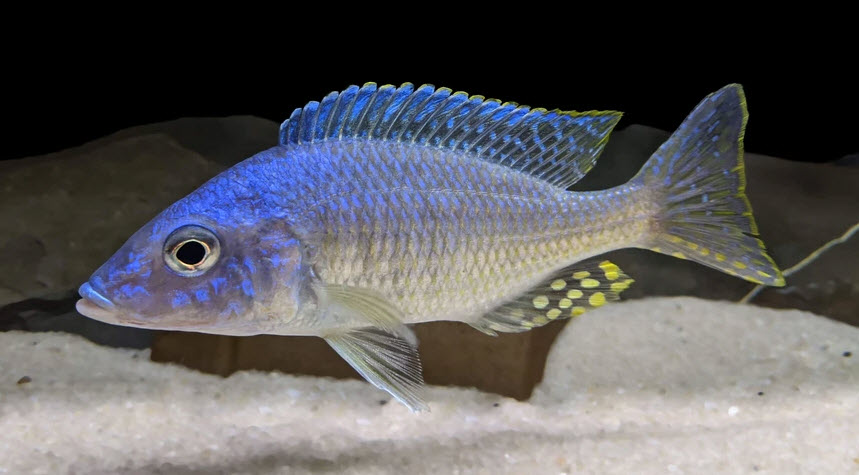
A Facebook comment is pertinent. From one John Dobs:
“At one point, my UV was on the same timer as the lighting system. I was replacing the bulb about every 6, maybe 8 weeks. I have since taken it off the timer and manually turn the unit off anytime I do a water change of more than 50% as it is low in the tank… this is rare. If I were to guess… the unit has run for 4 months or better with the same bulb.”
It is important to clean the UV units on about a monthly schedule. Any slime build-up in the unit will interfere with the UV sterilization. The in-line units need to be after a filter, not before it. This prevents fish feces and debris from blocking the UV rays.
With 24/7 operation replace the bulbs once a year. The bulbs typically only take a year till they are producing half the UV output they had when new.
If the water has a high GH, i.e. high calcium levels, then the quartz sleeve can get a white deposit on it. This white deposit needs to be very carefully cleaned with concentrated hydrochloric acid (muriatic acid or pool acid) as the deposit can severely reduce the efficiency of the unit.
Note that UV should not be used to compensate for poor filtration. UV should only be used as an adjunct to good filtration. One common reason for “needing” a UV sterilizer is cloudy water caused by using a hang-on-back or in tank cartridge filter.
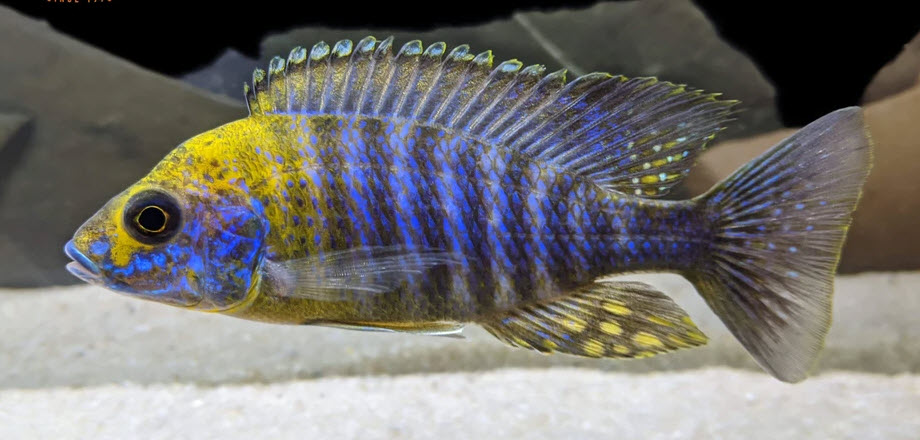
A hang-on-back filter or an in tank filter, especially if it is a cartridge type where the cartridge is cleaned or replaced weekly, will be a very poor biofilter. Such a cartridge filter needs an under-gravel, canister or sump added to it to give it good biofiltration.
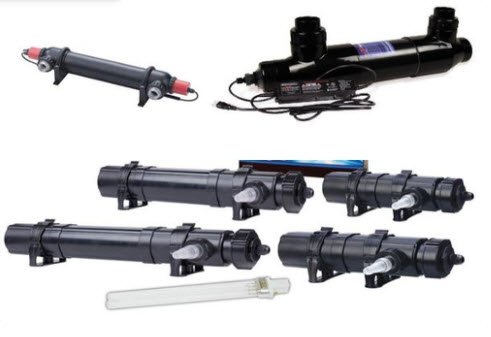
Selecting a UV Unit Size and Flow
Wide spread social media consensus (including profit driven internet directions and the directions that come with the units), is that UV in the home aquarium needs to have high wattages, low flows, high dwell times, splitters and/or flow control valves to be very effective. This is simply incorrect.
Low wattages and low residence times are both very effective because of an obscure scientific principle called the “Reciprocity Rule in Photobiology” (a residence time of one second in ten passes has the same effect as a residence time of ten seconds in a single pass). It is based on the fact that aquarium water will pass though a UV unit many times, so any pathogen is exposed to the UV light many times. Roughly one watt per ten gallons of aquarium water is enough to kill even ich trophonts, even at high flow rates and low residence times.
When we say “obscure” we do definitely mean “OBSCURE“. Ninety nine percent of the social media commentators on using UV in ponds or aquariums know nothing about the “Reciprocity Rule in Photobiology”. You will find many papers on UV in the aquarium that obviously don’t even know about the rule.
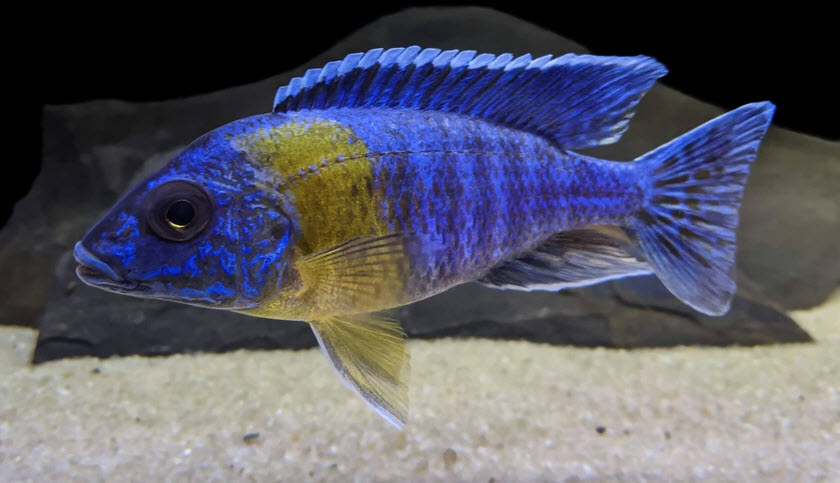
All research on UV in water systems is based on single pass sterilization, where high wattages and long residence times are very important. In an aquarium there are multiple passes of a given volume of water through a UV unit, not a single pass. So aquariums have to be treated much differently.
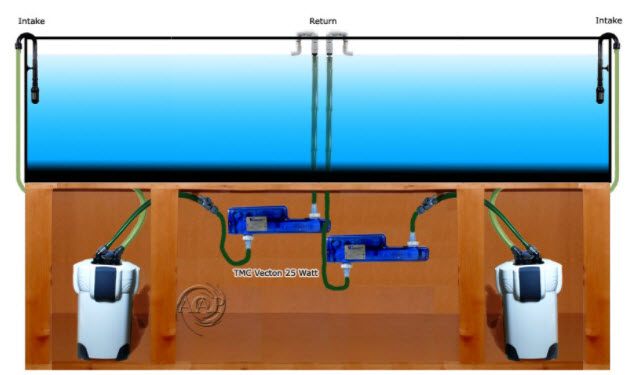
There is an excellent human analogy. Sunburn is caused by exposure of the skin to UV rays. The experts will correctly tell one that you can not get a sunburn from being under a sun lamp for ten minutes, i.e. “the residence time is too short”. But the human analogy of an aquarium being turned over six times per hour is being under a sunlamp for ten minutes once an hour for 24 hours a day, seven days a week. That sort of regimen will give a human severe sunburn every time. By the same token that sort of regimen in the aquarium kills most waterborne organisms.
If one is interested in an in depth analysis with references on how the wattage requirement of one watt per ten gallons is arrived at read the following link:
14.1.1. UV in More Depth.
Price is a debatable issue. There are those that always go with the “better” more expensive units. The surprising thing is that many of the expensive units ($400) use the same UV bulbs as the cheap units ($60). Since the performance of a UV unit is largely dependent on the bulb this is somewhat confusing.
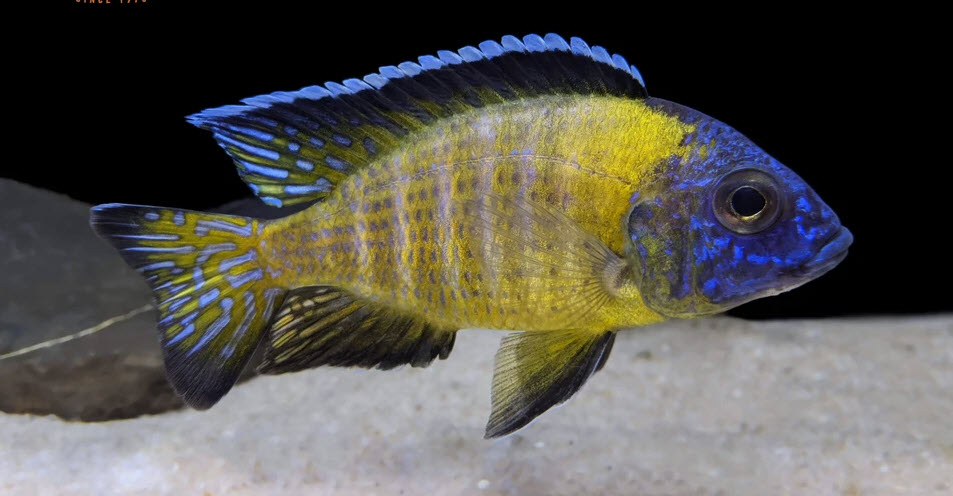
There are many types of UV units available. This link will guide one through the choices:
14.1.2. Selecting a UV Unit
.
Return to Equipment Menu
.
Aquarium Science Website
The chapters shown below or on the right side in maroon lead to close to 400 articles on all aspects of keeping a freshwater aquarium. These articles have NO links to profit making sites and are thus unbiased in their recommendations, unlike all the for-profit sites you will find with Google. Bookmark and browse!
.

Dave says
In reply to George ….. I’m not aware of any interactions between fertilizers and UV, including micros.
George says
Hi Dave
Thanks for your valuable information about the Uv sterilizers.
I am using a 5w unit to 100 litter 28G planted tank using EI method for fertilizing. I would like to ask if the uv sterilizer is affecting by any means the fertilizers and especially micro ?
That’s a lot
Kind regards
George
Dave says
In reply to Peter M. You are correct. Dollar for dollar a large pond filter will do more for green water than will a large UV unit.
Peter M says
Hi Dave,
Thank you for all the valuable information. My conclusion is if I have enough bio-filtration, I wouldn’t need UV, is that correct? I have two indoor fish tanks, and never needed UV. However, I’m currently doing research into building a outdoor koi pond, and I was considering UV because I’m concerned that the increase sunlight exposure would cause the green murky water that so my people with ponds seem to have. If I have adequate bio-filtration, would I need UV? Also, wouldn’t it be a better investment to say buy a 2 cubit feet bag of K2 media instead of spending the money in UV?
Best regards,
Peter M
Dave says
In reply to Jeremey R …. I would stick with 2X and a single UV unit. Your bacteria control should come from your biofiltration, not your UV unit. And I know of no good way to tell it a bulb needs replacing. And I guess one can compare a timed KMnO4 test and get some idea of how worn out the bulbs are but I’ve never seen one elucidated.
Jeremy R says
Hi Dave,
Thanks again for your detail on this. I had purchased my UV lights prior to coming here, and I was pleased to see that we use the same units, based on the same no-non-sense marketing hype.
Two Questions….
I noticed you mentioned a turnover of 4x tank volume to kill bacteria. I run mine at about 2x turn over (3000LPH, in a 1700L (tank + sump)), with 36W UV. I’m not sure of the likelihood of being able to push more water through this unit with 25mm fittings.
Q1: I suspect I should add another UV unit and run it in parallel on another pump?
Q2: Do you know of any rough ways to determine the effectiveness of an older bulb?
I’ve got 3 units of the same Jebao 35W bulbs and they have been on and off different tanks for different periods of time over the last 12 months.
I have a wireless PAR and LUX meter – I can set it up and record each bulb against a new one. Not sure how useful that will be, I think some PAR light is in the UV spectrum.
I did see AAP do a UV test with KMnO4 but if I recall correctly I think you were amused by their commentary – not sure.
Kindest regards,
Jeremy R